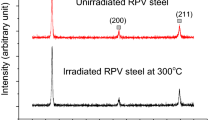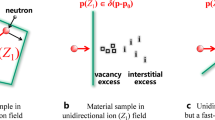Abstract
I HAVE attempted to repeat the interesting experiments reported by Ehrenhaft and Banet1 on the effect of ultra–violet radiation on “non–magnetic” and annealed pieces of iron. They stated that, with the simplest apparatus (for example, a cheap compass needle), they showed that poles were induced in various pieces of annealed iron, the poles being mainly north magnetic. The specimens were placed perpendicularly to the geomagnetic field and irradiated for periods varying from minutes to several hours. The poles, they state, were present in many specimens after several days.
This is a preview of subscription content, access via your institution
Access options
Subscribe to this journal
Receive 51 print issues and online access
$199.00 per year
only $3.90 per issue
Buy this article
- Purchase on SpringerLink
- Instant access to full article PDF
Prices may be subject to local taxes which are calculated during checkout
Similar content being viewed by others
References
Ehrenhaft, F., and Banet, L., NATURE, 147, 279 (1941).
Edie, E. G., and Focken, C. M., Trans. Roy. Soc., N.Z., 71, Part I (1941).
Author information
Authors and Affiliations
Rights and permissions
About this article
Cite this article
FOCKEN, C. Magnetization of Matter by Ultra–violet Radiation. Nature 148, 438 (1941). https://doi.org/10.1038/148438a0
Issue date:
DOI: https://doi.org/10.1038/148438a0
This article is cited by
-
Magnetization of Matter by Ultra-Violet Radiation
Nature (1943)



